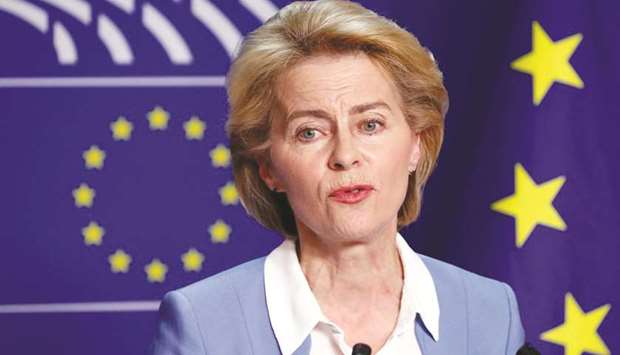When then-defence minister for Germany Ursula von der Leyen ran for the European Union’s top job last year, she pitched herself as a climate enthusiast.
“We must go further. We must strive for more,” she said during her candidate speech at the European Parliament. “I want Europe to become the first climate-neutral continent in the world by 2050.”
She got the job, and has been serving as European Commission president since December.
Under her leadership, the commission — though the initial proposal pre-dates her presidency — suggested spending 25% of the European Union’s seven-year budget and the coronavirus recovery package on “climate targets.”
The EU governments pushed for even more, and committed to spending 30% of the EU’s budget on climate — a 10% jump from the 2014-20 budget. With a total package of 1.8tn euros ($2.1tn), the climate tag comes in at 600bn euros.
But while that might sound good on paper, environmentalists remain sceptical.
“The problem is right now it’s turned into massive greenwashing,” said Berenice Dupeux, senior policy officer for agriculture at the European Environmental Bureau, a network of various environmental groups.
She said most of the spending that the EU counted under its climate umbrella — about 50% — isn’t actually to be spent on the environment: instead, they went to the union’s Common Agriculture Policy, without setting additional climate criteria.
And a large chunk of that money was paid out as direct payment to farmers to support their income, she said.
Yet, as the commission expects farmers to respect environmental regulations the EU had put in place, it automatically counts 20% of direct payments as going towards the climate target.
But as standards were simply the bare minimum, Dupeux said, and no one checked what the farmers use the money for, the percentage didn’t reflect reality.
Dupreux alleged that much of this approach, which she said lacked scientific evidence, stemmed from political pressure.
The commission is often dependent on the approval of the 27 governments in the bloc,
so its rules aimed at striking a balance between the different interests.
The national agricultural ministers, in turn, wouldn’t agree on cutting funding from direct farmers and financing pure climate activities instead, she said.
“Politically, they will not survive if they do that. They don’t want to touch the pot of money that is spent for social issues and shift it to climate,” she said.
The European Commission rejected the allegation. “This is the biggest green investment package the world has ever seen,” a commission spokesperson said. “The ambitions for a greener, more digital and more resilient Europe will remain guiding principles of the Next Generation EU and the next long-term budget.”
The spokesperson said that it followed a “clear and well-established” methodology to measure progress, namely the so-called Rio markers.
The Rio markers measure whether reducing greenhouse gas emissions is the principal objective of an activity, a secondary but significant objective, or if it does not target climate change at all.
Depending on that assessment, it attributes how many per cent of a spending activity went to climate.
For Dupeux, the EU’s use of this method failed to produce any tangible results as it didn’t look into the actual effects a project had on climate.
Markus Trilling, finance and subsidies policy co-ordinator at Climate Action Network, echoed her assessment and said that much clearer benchmarks were needed to assess what projects and investments the money should be spent on.
The current budget approach to climate, he said, “is an accounting exercise rather than a strategic, forward-looking planning approach.”
But the commission said its agricultural policy required EU countries to put sufficient emphasis on climate. “Member states will have the legal obligation to clearly show greater ambition than at present with regard to care for the environment and climate,” a spokesperson said.
The EU’s cohesion fund — a tool to narrow economic and development differences between the member states — was slightly better regulated for climate expenditures, Trilling said, as countries have to commit to specific climate-related project.
After agricultural policy, the cohesion fund is the pot of money where most of the EU’s climate-related money goes.
But also this fund left much room for improvement, with little checks being implemented on how the projects contributed to climate targets in reality, he said.
The 30% of spending going towards the climate target also apply to the EU’s 750-bn-euro coronavirus economic recovery funds.
Separate from the EU’s long-term budget, this fund leaves it in the hands of EU countries how the money is spent and gives the EU commission only minor leverage on the spending.
Trilling said it was now crucial that countries lived up to their climate promise also in the recovery funds and proposed spending plans that reflected this.
“If member states don’t put significant amount into the clean transition, you can flush the 30 per cent down the toilet,” he said.

Ursula von der Leyen
